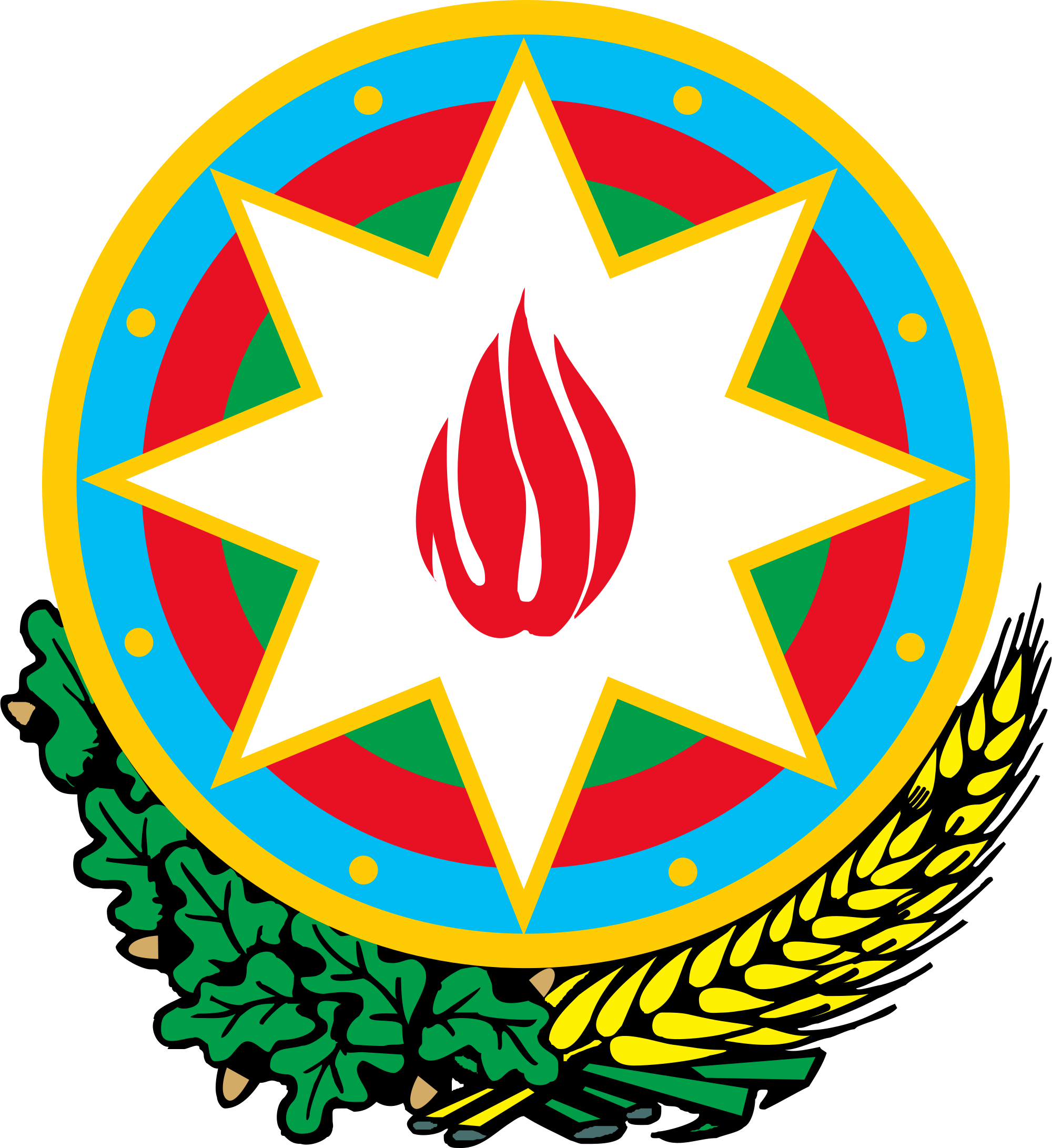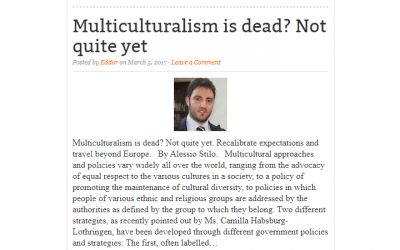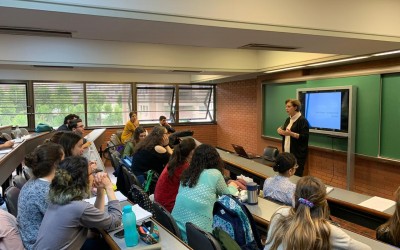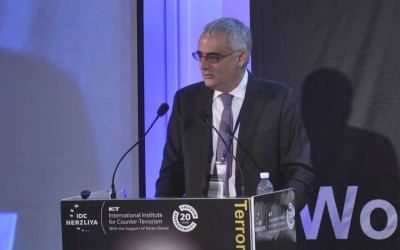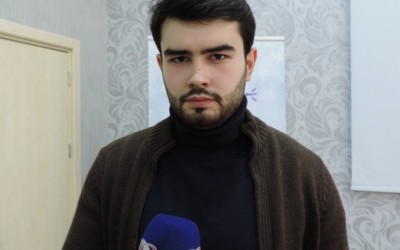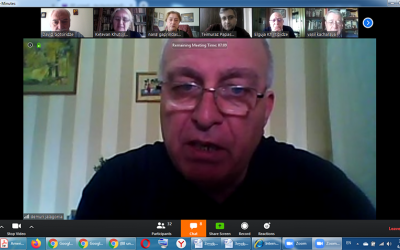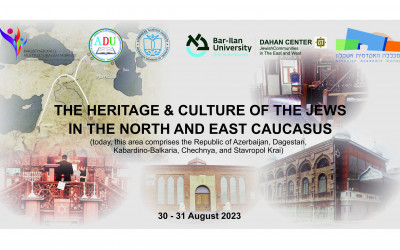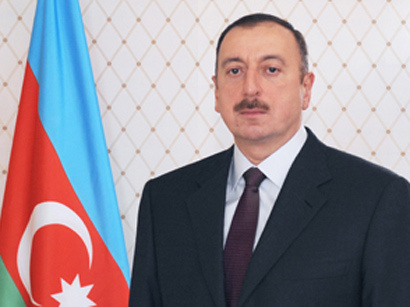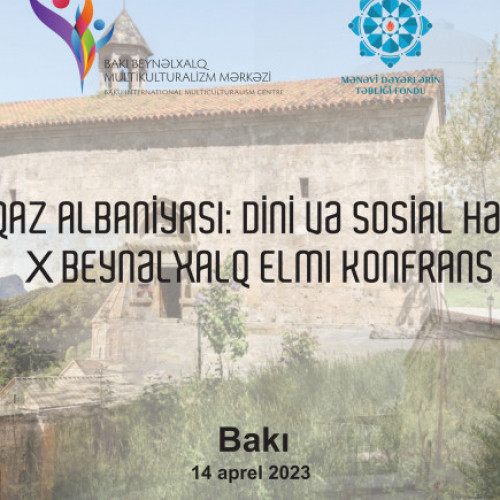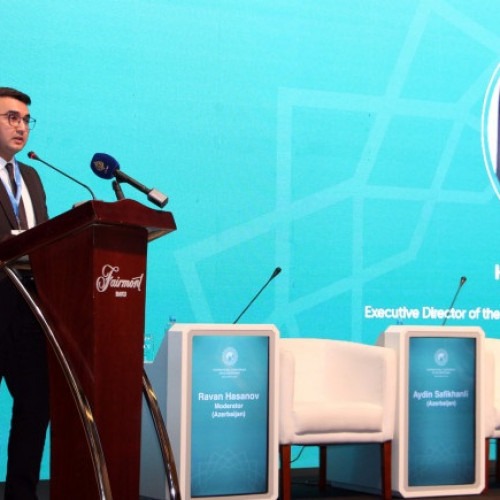Jewish-Muslim Solidarity in Azerbaijan
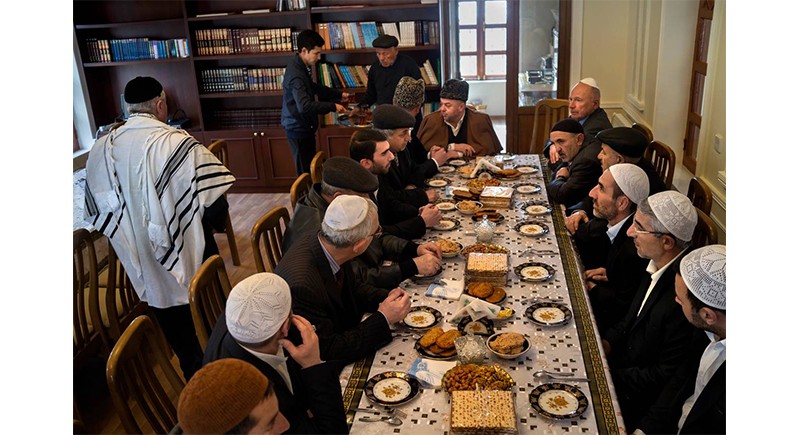
On Nov. 10, the 44-day war between Azerbaijan and Armenia came to an end, as Armenia agreed to a ceasefire and to withdraw from territories it has occupied. For the past 30 years, Armenia had occupied 20% of Azerbaijan’s sovereign territory. In the process, 800,000 Azerbaijanis were forcibly displaced inside their homeland and an additional 250,000 were exiled from Armenia at the outset of the war.
Days before the ceasefire, Azerbaijan successfully took back the city of Shusha, a town of very special meaning to all people of Azerbaijan. Considered the cultural capital of Azerbaijan, Shusha is also where one of our most decorated and beloved war heroes, Albert Agarunov, fought bravely and lost his life to an Armenian sniper in 1992. His story is both the story of an Azerbaijani Jewish war hero and also the story of the remarkable cultural coexistence and friendship between Azerbaijanis of Muslim, Jewish, and Christian faiths and origins.
Agarunov volunteered to fight against the Armenian invasion in 1991. His ability to subvert the enemy at many turns led to his rise as a tank commander who gained the status of a hunted man, as the Armenian army placed a bounty of $100,000 on his head. Agarunov was one of the last men standing in defense of Shusha in 1992. He was killed because he left the safety of his tank, because to Albert, navigating the vehicle around the slain bodies of his fellow soldiers so as to respect their sacrifice meant more to him than his own life.
Today, Albert is buried in Azerbaijan’s Martyrs’ Lane, the national cemetery for our war heroes. Albert was one of the first soldiers to be awarded the title of Azerbaijan’s National Hero. Under the direction of Azerbaijan’s President Ilham Aliyev, a street in Baku was named after Albert Agarunov and his statue was unveiled last year on the same street.
The idea of a Jewish national war hero in a Muslim-majority country might seem strange in some places. But not here. While anti-Semitism has seen a sharp rise in many places around the world, including Europe and the United States, majority-Muslim Azerbaijan remains one of the safest places on Earth for Jews, and a close friend and strategic ally of the State of Israel.
Jews have lived in Azerbaijan for over 2,000 years, settling there after the destruction of the Second Temple. Jews were in Azerbaijan when the country was majority Zoroastrian, then majority Christian (after the fourth century) and then majority Muslim (after the seventh century), always living in peace and dignity and without fear of anti-Semitism or discrimination.
In 1742, the Azerbaijani Muslim ruler of the Quba region, which is my home, established a community where Jewish residents not only had the physical protection of Muslim rulers but were given the resources to build a flourishing, industrious town of their own. That town was called “Little Jerusalem” by many Jews in Russia and Eastern Europe hoping to immigrate there for safety. Today, it is the only all-Jewish town outside of Israel and the state of New York, and is known as “Red Town.”
Azerbaijan has a long, deep tradition of standing on the righteous side of history, whether in protecting Jews throughout the centuries, or in losing 1 in 5 Azerbaijani men to fight the Nazis (over 400,000 Azerbaijani soldiers died fighting Nazi Germany), or in sheltering 10,000 European Jews fleeing the Holocaust. Invading Azerbaijan was of particular importance to Hitler, who wanted the oil fields that provided 80% of the fuel for the Soviet army. Hitler tried hard, but failed to capture Baku and its oil fields.
Today, Red Town has incomparably beautiful synagogues, and a flourishing Jewish community has resided there for generations. Approximately 30,000 Jews live across Azerbaijan and are represented in all three branches of government and included in every facet of the nation’s life. Mizrahi (Mountain Jews) and Ashkenazi Jews have their respective synagogues, schools, and various organizations, with kosher dining available in Azerbaijan’s capital city of Baku as well as in Red Town.
For decades Azerbaijan has also been a strong and intimate ally of the State of Israel. Despite the risks of friendship with Israel, as a neighbor to both Iran and Russia, and as a majority-Muslim nation in a precarious world, Azerbaijan has been steadfast in its friendship. Today both nations share resources, technology, and a strong partnership against international terrorism, which resulted in their strong cooperation in the face of Armenian aggression.
What is the secret to Azerbaijan’s unusual cultural and religious harmony? It’s simple. Muslims and Jews in Azerbaijan, alongside many denominations of Christianity, as well as Baha’is, Hare Krishnas, and Buddhists, are longtime neighbors who have always chosen to treat each other with reverence and respect. We have also faced horrific challenges together. Azerbaijani Jews and Muslims alike have been slaughtered, tortured and displaced—a less enviable history that has bound us to each other in a recognition of our shared fate.
The current war began in the early 1990s, when Armenia invaded villages and towns in Azerbaijan’s Karabakh region, and slaughtered as many Azerbaijani civilians as possible, including infants, women, and elderly. In response, Azerbaijan fought tirelessly, with Muslims, Jews, and Christians fighting side by side to protect their countrymen and homeland, but the Armenian aggression was beyond expectation, and the Karabakh region was seized by the Armenian invaders. Entire villages were destroyed, and ancient mosques were turned into barns for pigs and cows. Armenia’s seizure of Azerbaijani lands has been repeatedly condemned by the entire international community, including by United Nations Security Council and General Assembly resolutions. But Armenia ignored the condemnation and remained as occupiers.
Armenia’s recent behavior in Karabakh also has a history—a dark one. In 1918, Armenian nationalists enacted merciless pogroms in Azerbaijan. These events are known as the March Genocide. It is a dark page in our nation’s history, when invading Armenian Dashnaks, supported by Bolsheviks, committed massacres across Azerbaijan, targeting thousands of Azerbaijani Muslim civilians as well as many members of my own Mountain Jewish community in Quba.
The atrocities against Azerbaijani residents of Baku culminated, at the end of March 1918, in a real genocide, resulting in the horrific massacre of over 12,000 Azerbaijani Muslims, many of them women and children, within just a few days. One in 5 Azerbaijanis living then in Baku was murdered by Armenian Dashnaks. Later an investigation by the first Republic of Azerbaijan (1918-20) would reveal that many Jews living in Baku did whatever they could to save Azerbaijani Muslims from this slaughter.
This strong Muslim-Jewish solidarity and friendship enraged the invaders. When the anti-Azerbaijani pogroms spread throughout the rest of Azerbaijan, resulting in the killing of 50,000 Azerbaijanis, my home region of Quba with its large Mountain Jewish population became one of the centers of Armenia’s genocide against our people.
In Quba, Muslim and Jewish Azerbaijanis came together to defend their nation. In response, thousands of Jews were massacred by the Armenian Dashnaks. Their crime was simply siding with their Muslim brothers and sisters, and their homeland, Azerbaijan—a country that for centuries had protected our people from harm and hatred. In 2007, a mass grave of bones and skulls was discovered and unearthed in Quba of thousands of Jews and Muslims who had died together for no greater crime than their shared peacefulness, love for freedom, and loyalty to their countrymen.
Armenia’s record when it comes to the treatment of Jews and other nonmajority groups is no less clear. In the 1930s, Armenian nationalist groups in the United States supported Hitler’s policies and the Holocaust, while the Wehrmacht included an Armenian Legion, led by Garegin Nzhdeh and Drastamat Kanayan. This unit fought in Crimea, the Caucasus, and southern France, helping the Nazis to round up Jews and resistance fighters to be marched to the death camps.
Today, those Armenian Nazi collaborators are glorified in Armenia as national heroes. A gigantic statue of Garegin Nzhdeh “adorns” the center of Armenia’s capital, Yerevan. In addition to the statue, a square and metro station in Yerevan are also named after Nzhdeh. The “legacy” of this “national hero” is taught to children in Armenian public schools as something worthy of emulation. To honor Armenia’s other famous Nazi collaborator, Drastamat Kanayan (better known as General Dro), the government of Armenia has established the Drastamat Kanayan Institute of National Strategic Studies. The Armenian Ministry of Defense established a medal in Kanayan’s name to decorate its military personnel and civilians who excel in military teaching.
It is no wonder, then, that the Anti-Defamation League lists Armenia as the second-most anti-Semitic nation in Europe and one of the top three most anti-Semitic countries in the world outside of the Middle East and North Africa. In 2018, a Pew Research Center survey found that 32% of Armenians would not accept Jews as fellow citizens, making Armenia the most unfriendly country toward Jews in Eastern and Central Europe. Last month, Armenia invited infamous members of the neo-Nazi German Alternative für Deutschland (Alternative for Germany) party to the occupied Nagorno-Karabakh region of Azerbaijan in order to rally support for the continued occupation, while Armenia’s government officials and Armenian diaspora groups in the United States compared Israel to Nazi Germany, and their prime minister accused Israel of being allied with “the devil.”
While the world celebrates the recent treaties signed by Israel with other Muslim nations, Azerbaijan stands as the pioneer and exemplar of this peace process—absolute proof that multifaith harmony works and brings about an abundance of benefits for everyone. We hope many more countries in our neighborhood and much beyond can learn from this positive experience, moving their nations toward a future of multifaith and multicultural harmony and acceptance.

